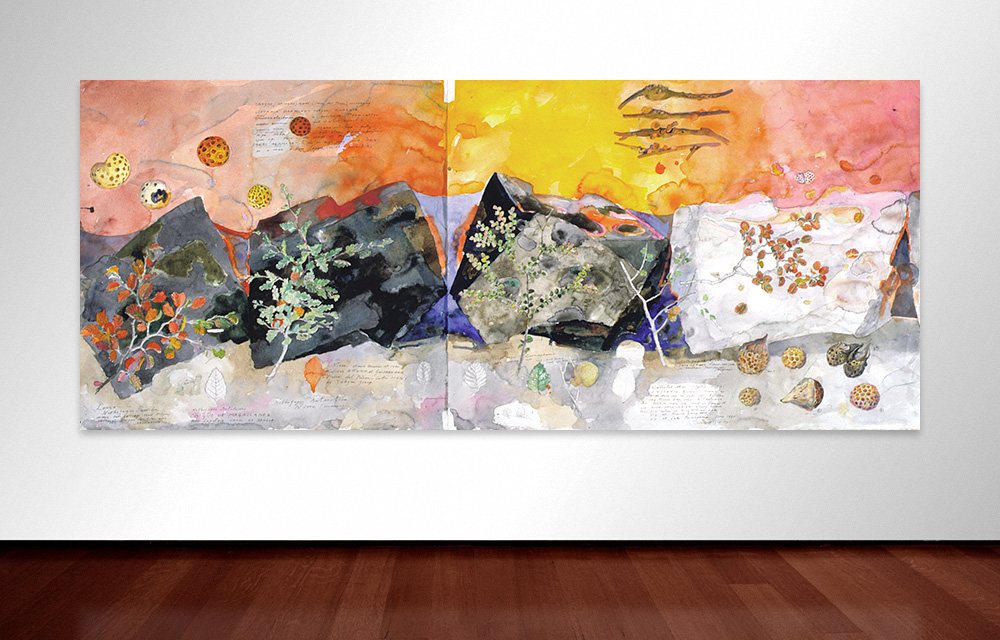


John Wolseley is a maverick in Australian art. Born in Britain in 1938, he moved to Australia in 1976. Untouched by the tendency towards photography and new media, Wolseley headed out into the field with sketchpad and pencil. His work recalls the scientific notations of nineteenth-century explorers, and in many ways he has more in common with his British predecessors than most contemporary artists. Wolseley’s mode of working is to continually travel to remote locations to source fresh material in a quest for sense and subjectivity. He takes photographs and maintains numerous journals.
Site and location is everything for Wolseley, whether it be the Simpson Desert or Lombok. Indeed, whatever location he selects, the history, geology, topography and flora and fauna must be collated and recorded. The gentle watercolour The spore bearing bodies of Cyttaria in Tasmania and Patagonia and their Nothofagus hosts (1996) reflects a fascination, indeed even an obsession, with the similarities between two sites at the opposite sides of the world—the glacial vistas in Tasmania and Patagonia—that were once joined as part of the Gondwana supercontinent.
A part of Wolseley's project reflects his concern for the environment. As he catalogues the flora and fauna of the locations he selects, he concentrates especially on species that are endangered due to the clearing of native forests. His notations bring home to the viewer the delicacy of the natural environment.
Wolseley's work is remarkable for its detail, as though the artist is obsessed with the minutia of life: 'the subtle and gentle things', according to Wolseley. 'People today seem to think that the only way to do things is to shout.'1
Wolseley hopes that his gentle approach to drawing and painting can seduce the viewer to consider the environmental issues his work raises:
I would hope that is the case, but I am terribly conscious of how marginalised artists are in terms of communicating to a wider audience. We must try to give art a wider audience; I do it in an almost political way in that I do feel that the dominant paradigms in which we are living in our industrial society are much more materialist and unspiritual. We're much more appallingly controlled by those hidden persuaders than we know. I see the role of the artist as giving an alternative to that.2
'The artist is forever competing against far more dramatic forms of information such as advertising and television', says Wolseley. 'But also much more horrifyingly stereotyped information systems. Most films today are clichéd capitalist entertainment.'3 However, unlike the documentary-maker, who uses film to construct a social and cultural critique, Wolseley is content to explore his concerns via the more time-proven method of pencil, paint and paper.
- Ashley Crawford
John Wolseley is represented in Australia by Roslyn Oxley9 Gallery, Sydney and Australian Galleries, Melbourne and Sydney.